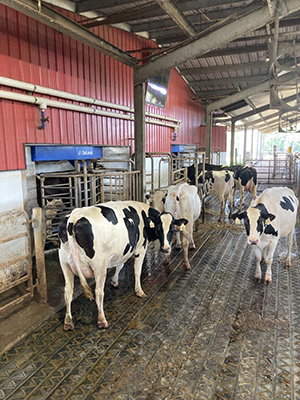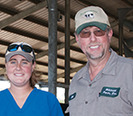
This is such a loaded question to me. I can dissect this one question into many different questions back to the person doing the asking. But, for me, the simplest answer to this question is that it varies.
In my opinion, if I were to give someone a specific number and it stayed at that number constantly, then I am not doing the best job possible. This golden number is a variable number, and it is always moving. It is not consistently higher or consistently lower, but it moves a little back and forth.
The number itself has so much power. It can make you and it also can break you. I can tell you that 65 cows per robot last month was great for me, but if I pushed the robots this month to 65 cows per robot, I would literally start tanking in milk production because of the number of cows that have freshened in the last week or two.
There are two factors that weigh heavily on determining what is my golden number of cows per robot at a specific time: days in milk for the herd and how many fresh cows have entered the herd within the last few days or weeks.
Each robotic dairy should have a different outlook on what the number is for them at that moment in time, and for very different reasons. A lot of farms keep their fresh cows in a parlor for the first few weeks or even months. This would change the days in milk drastically for the robot herd compared to someone who is milking all their cows in their robots. How many cows you are training at that moment also has a big impact on how many cows can you run per robot.
How many times is the robot having to wash outside of the main system washes a day? This also is a big deal to take into consideration; all these things take usage time away from the herd. Guided flow versus free flow affects this number, too. The average milk duration also has a huge impact. We jumped four to five cows per robot availability at one time just by tweaking a few things to cut down on durations.
I would not be doing anyone any favors by saying our number is 55, 65, or 70 cows per robot. And to be honest, if a dealer is saying a specific number to the customers, it’s honestly just flat out wrong.
Good luck to all the robot farmers out there. Keep chasing that golden number!

Mark and Caitlin Rodgers are dairy farmers in Dearing, Georgia. The Rodgers have a 400-cow dairy that averages 32,000 pounds of milk. Follow their family farm on Facebook at Hillcrest Farms Inc.